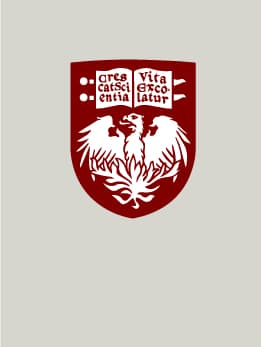Osteoarthritis Treatment at UChicago Medicine
At UChicago Medicine, we understand that living with osteoarthritis can be challenging, but our multidisciplinary team is here to help. Our orthopaedic surgeons, physical therapists and pain management specialists work together to provide you with the most advanced and effective treatments available.
Comprehensive Osteoarthritis Treatments
Osteoarthritis (OA) can significantly impact your quality of life, but at UChicago Medicine, we offer a wide range of treatments so you can manage symptoms and maintain your daily activities. Our approach is comprehensive, personalized and designed to address your specific needs.\
Depending on the severity of your OA, we offer a comprehensive range of treatments designed to manage your symptoms and improve your quality of life. But whether you’re looking for nonsurgical options or considering surgery, we will navigate your treatment journey together with compassion and expertise.
If you’re ready to take the next step in managing your osteoarthritis, contact UChicago Medicine Orthopaedics today.
1. Lifestyle Modifications
Lifestyle changes are often the first line of defense against osteoarthritis. Small adjustments can have a big impact on managing symptoms and slowing the progression of the disease.
- Weight Management: Excess weight puts additional stress on weight-bearing joints like the knees and hips, which can accelerate cartilage breakdown.
- Exercise: Regular physical activity is critical for maintaining joint health. Low-impact exercises like swimming, walking and cycling can strengthen the muscles around your joints, improve flexibility and reduce pain.
- Joint Protection: Learning how to protect your joints from unnecessary stress can help prevent further damage. This may include using assistive devices like braces, canes or shoe inserts, as well as learning proper techniques for lifting and carrying objects.
2. Medications
Medications can play a crucial role in managing osteoarthritis symptoms, particularly pain and inflammation. The type of medication recommended depends on the severity of your symptoms and your overall health.
- Pain Relievers: Over-the-counter pain relievers, such as acetaminophen, are often recommended for mild to moderate pain. For more severe pain, prescription medications may be necessary.
- Nonsteroidal Anti-Inflammatory Drugs (NSAIDs): These medications, such as ibuprofen and naproxen, reduce inflammation and pain. They’re available over the counter or in stronger prescription forms.
- Topical Analgesics: These creams, gels, or patches can be applied directly to the skin over the affected joint. They contain pain-relieving ingredients like capsaicin, salicylates, or counterirritants that provide temporary relief.
- Corticosteroids: Oral corticosteroids are powerful anti-inflammatory medications that can be used to control severe flare-ups.
3. Physical Therapy
Physical therapy is a cornerstone of osteoarthritis treatment, providing a noninvasive way to manage pain and improve joint function.
- Strengthening Exercises: Physical therapists will guide you through exercises that target the muscles surrounding your affected joints. Strengthening these muscles can help stabilize your joints and reduce pain.
- Range of Motion Exercises: Maintaining or improving your range of motion is key to preventing stiffness. Stretching exercises can help you maintain flexibility and mobility.
- Aerobic Conditioning: Low-impact aerobic exercises, such as walking or swimming, can improve your cardiovascular health without placing undue stress on your joints.
- Assistive Devices Training: If needed, your physical therapist can help you learn how to use assistive devices like canes, walkers, or braces to reduce joint stress and improve mobility.
4. Injections
When lifestyle modifications, medications, and physical therapy aren’t enough, injections can provide targeted relief for osteoarthritis symptoms.
- Corticosteroid Injections: These injections deliver powerful anti-inflammatory medication directly into the painful joint. While they can provide significant pain relief, the effects are typically last from a few weeks to several months.
- Hyaluronic Acid Injections: Often referred to as viscosupplementation, hyaluronic acid injections aim to improve joint lubrication and reduce pain. This treatment is typically used for knee osteoarthritis, especially when other treatments haven’t been effective. The results can last for several months.
- Platelet-Rich Plasma (PRP) Therapy: PRP therapy uses your own blood platelets to promote healing in the problem joint.
- Stem Cell Therapy: Stem cell therapy is used to repair damaged tissues by injecting stem cells directly into the joint.
5. Surgical/Nonsurgical Treatment
When other treatments fail to provide relief, surgery may be the right choice for you. UChicago Medicine offers advanced surgical and nonsurgical options for patients with severe osteoarthritis.
- Arthroscopy: A minimally invasive procedure that can be used to diagnose and treat joint problems. During arthroscopy, a small camera is inserted into the joint, so your surgeon can remove loose pieces of cartilage, repair damaged tissue or smooth rough joint surfaces. Arthroscopy is generally most effective for younger patients or those with early-stage osteoarthritis.
- Genicular Artery Embolization: Genicular artery embolization (GAE) is a novel, minimally invasive procedure that treats chronic knee pain caused by osteoarthritis. A catheter (a thin, flexible tube) is inserted into the genicular arteries through a small incision in the groin. Using X-ray guidance, the catheter is directed to the abnormal artery and tiny particles are injected into the artery to block blood flow to the area and kill the nerves that is causing the pain. This technique can help reduce joint inflammation, relieve pain and increase mobility to the knee.
- Osteotomy: In cases where osteoarthritis has led to joint misalignment or deformities, osteotomy can reshape the bones to relieve pressure on the joint. Osteotomy is often used for younger patients with knee osteoarthritis to delay the need for joint replacement surgery.
- Joint Replacement (Arthroplasty): Joint replacement surgery is a highly effective treatment for advanced osteoarthritis. The damaged joint surfaces are replaced with artificial components, restoring function and decreasing pain. UChicago Medicine’s orthopaedic surgeons are experts in both partial and total joint replacements, including hip, knee and shoulder replacements. Advances in surgical techniques and materials have significantly improved the outcomes and longevity of joint replacement procedures.
- Fusion (Arthrodesis): For some patients, especially those with severe osteoarthritis in the spine or ankle, joint fusion may be recommended. During this procedure, the bones of the joint are fused together, eliminating movement and reducing pain. While fusion can provide significant pain relief, it also results in loss of flexibility in the joint.




